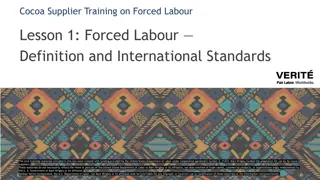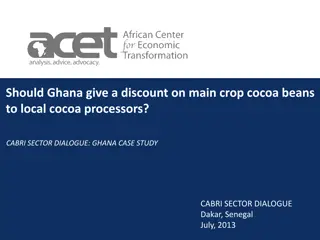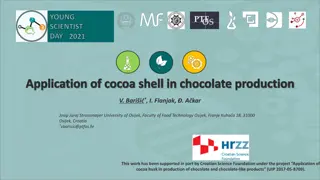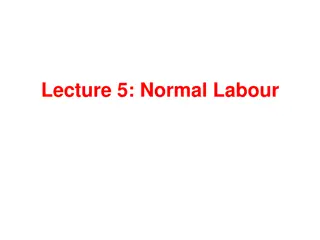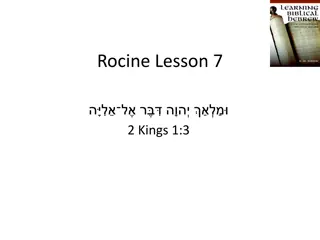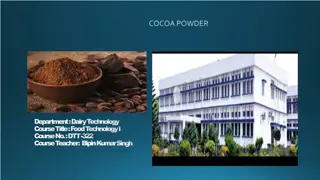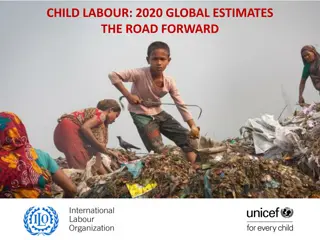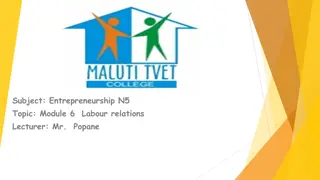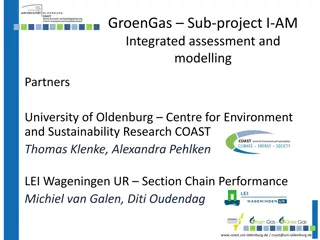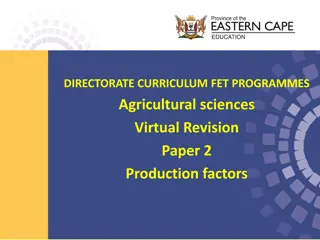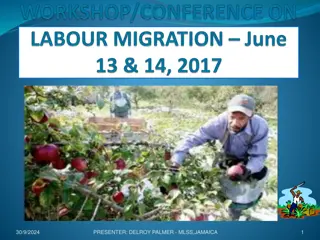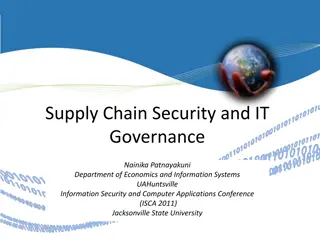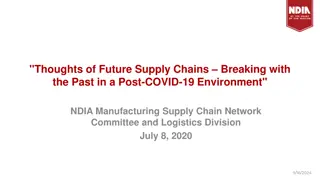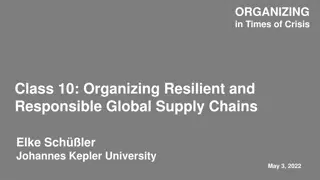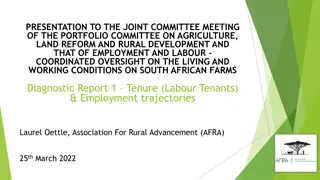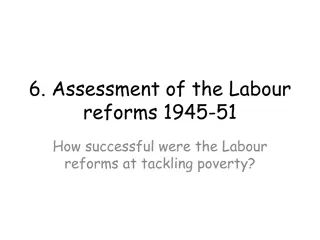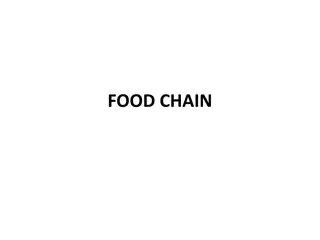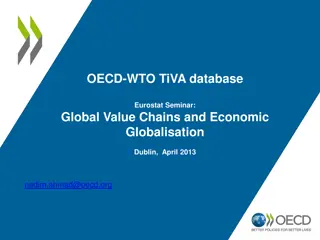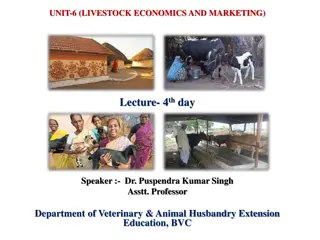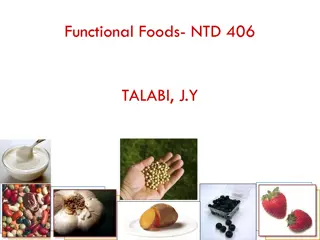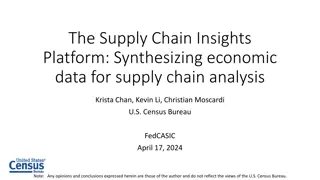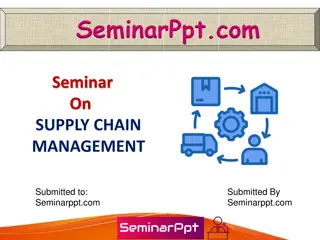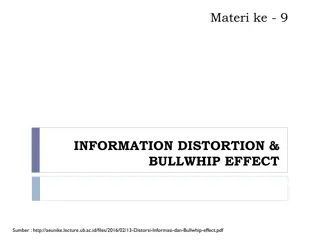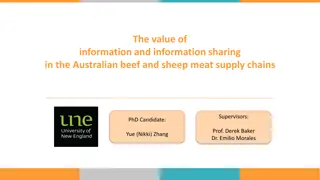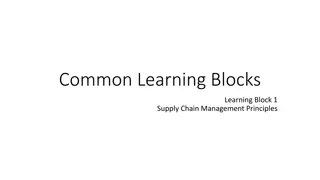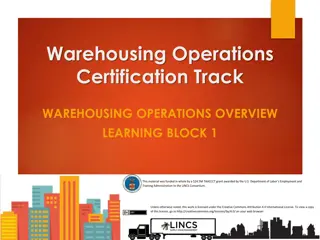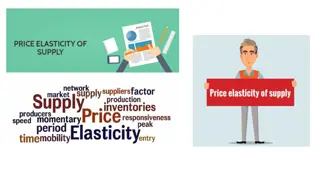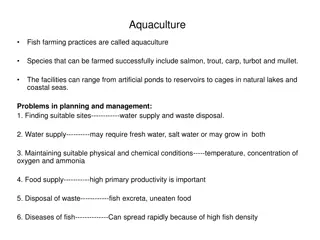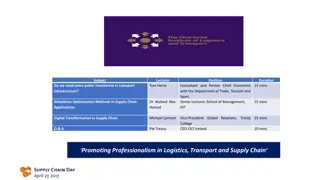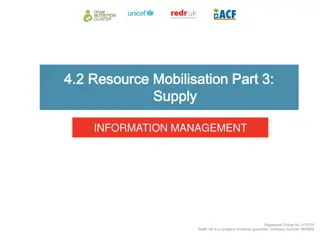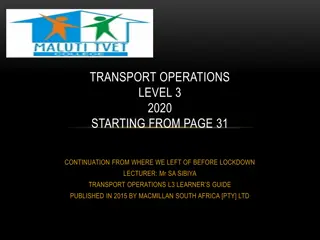Effective Collaboration Strategies to Combat Forced Labour in Cocoa Supply Chains
Learn about the importance of coordination and collaboration with stakeholders in addressing forced labor in the cocoa industry. Explore potential collaborators, possibilities for collaboration, and the need for a comprehensive approach involving various organizations and sectors to combat forced labor effectively.
Download Presentation

Please find below an Image/Link to download the presentation.
The content on the website is provided AS IS for your information and personal use only. It may not be sold, licensed, or shared on other websites without obtaining consent from the author. Download presentation by click this link. If you encounter any issues during the download, it is possible that the publisher has removed the file from their server.
E N D
Presentation Transcript
Cocoa Supplier Training on Forced Labour Lesson 7: Coordination and Collaboration with Stakeholders The core trainings materials included in this site were created with funding provided by the United States Department of Labor under cooperative agreement number IL 31474. Mars Wrigley funded the adaptation for use by its cocoa suppliers. These materials do not necessarily reflect the views or policies of the United States Department of Labor or Mars Wrigley or its affiliates, nor does mention of trade names, commercial products, or organizations imply endorsement by the U. S. Government or Mars Wrigley or its affiliates. Neither Verit Incorporated, the U.S. Department of Labor, nor Mars Wrigley or its affiliates shall be held liable for any improper or incorrect use or modification of these materials or the information contained herein.
Objective To help participants learn the importance of collaboration and coordination in the fight against forced labour 2 2 Cocoa Supplier Training on Forced Labour
Community monitors cannot combat forced labour alone 3 3 Cocoa Supplier Training on Forced Labour
A comprehensive and coordinated approach to address forced labour Cocoa suppliers cannot combat forced labour alone and must forge alliances with a broad range of organizations that play a role in eliminating forced labour. To succeed, agencies must share information and coordinate their activities. For example, labour conditions in cocoa production intersect with, among other topics: social security employment relations macroeconomic policy health and safety migration education 4 4 Cocoa Supplier Training on Forced Labour
Potential collaborators These groups may have access to information or resources that community monitors can leverage. Private sector and employers associations Trade unions Municipalities, village development committees The media To prevent, identify and eliminate forced labour Government ministries; other national actors NGOs, civil society Child rights, protection and welfare officers, for forced child labour Health services
Possibilities for collaboration Private sector and employers associations Supply chain monitoring Trade unions Legal reform Municipalities, village development committees Government action plans Policy advocacy The media To prevent, identify and eliminate forced labour Awareness-raising, social mobilization Rule of law enforcement Government ministries; other national actors NGOs, civil society Alliance-building Prevention programmes Child rights, protection and welfare officers, for forced child labour Health services
Example of collaboration: FLIP Ghana TWG Forced Labour Indicator Project s (FLIP) Technical Working Group (TWG) in Ghana to address forced labour Includes representatives from: government ministries employer and employee organizations civil society Activities include: members progress updates on addressing forced labour information-sharing among the community of experts 7 7 Cocoa Supplier Training on Forced Labour
Example of collaboration: FLIP Ghana TWG TWG members include representatives from: Ghana s Ministry of Employment and Labour Relations Ministry of Gender, Children and Social Protection General Agricultural Workers Union Solidaridad West Africa The International Labour Organization The Minerals Commission Ghana Free the Slaves The International Cocoa Initiative The Cocoa Research Institute of Ghana The Ghana Cocoa Board Ghana Employers Association The Ghana Police Service s Anti-trafficking Unit and Domestic Violence and Victim Support Unit 8 8 Cocoa Supplier Training on Forced Labour
Example of collaboration: FLIP Ghana TWG To date, the TWG has provided technical inputs for the implementation of the FLIP, including contributing to the project s online learning resources. They also reviewed and verified sector field findings on forced labour before the findings were officially submitted to Ghana s Ministry of Employment and Labour Relations. Some have worked with the FLIP team to train their institutions on the forced labour indicators. 9 9 Cocoa Supplier Training on Forced Labour
Example of collaboration: ICI The International Cocoa Initiative (ICI) "ICI is a multi-stakeholder partnership advancing the elimination of child labour and forced labour, by uniting the forces of the cocoa and chocolate industry, civil society, farming communities, governments, international organizations and donors."* Includes representatives from: cocoa and chocolate companies cocoa producer organizations and communities civil society organizations Governments of C te d Ivoire and Ghana ICI's 2021-2026 strategy** explicitly includes promotion of collaboration to increase alignment and accountability across stakeholders. *https://cocoainitiative.org/about-ici/about-us/ **https://cocoainitiative.org/knowledge-centre- post/ici-strategy-2021-2026/ 10 10 Cocoa Supplier Training on Forced Labour
Example of collaboration: ICI ICI activities include:* Community level: awareness-raising development of community action plans work in the areas of education, health, water and sanitation and rural livelihoods Supply chain level: Implementation of CLMRS Training for supply chain actors Engagement with certification schemes National and international levels: Training and technical advising to governments and private sector Data collection and development and dissemination of good practice guidance Awareness-raising and public education *https://cocoainitiative.org/our-work/our- work/community-level/ 11 11 Cocoa Supplier Training on Forced Labour
Questions for reflection What are some examples of ways that community monitors in the field collaborate with stakeholders? What can be done to improve collaboration? 12 12 Cocoa Supplier Training on Forced Labour


